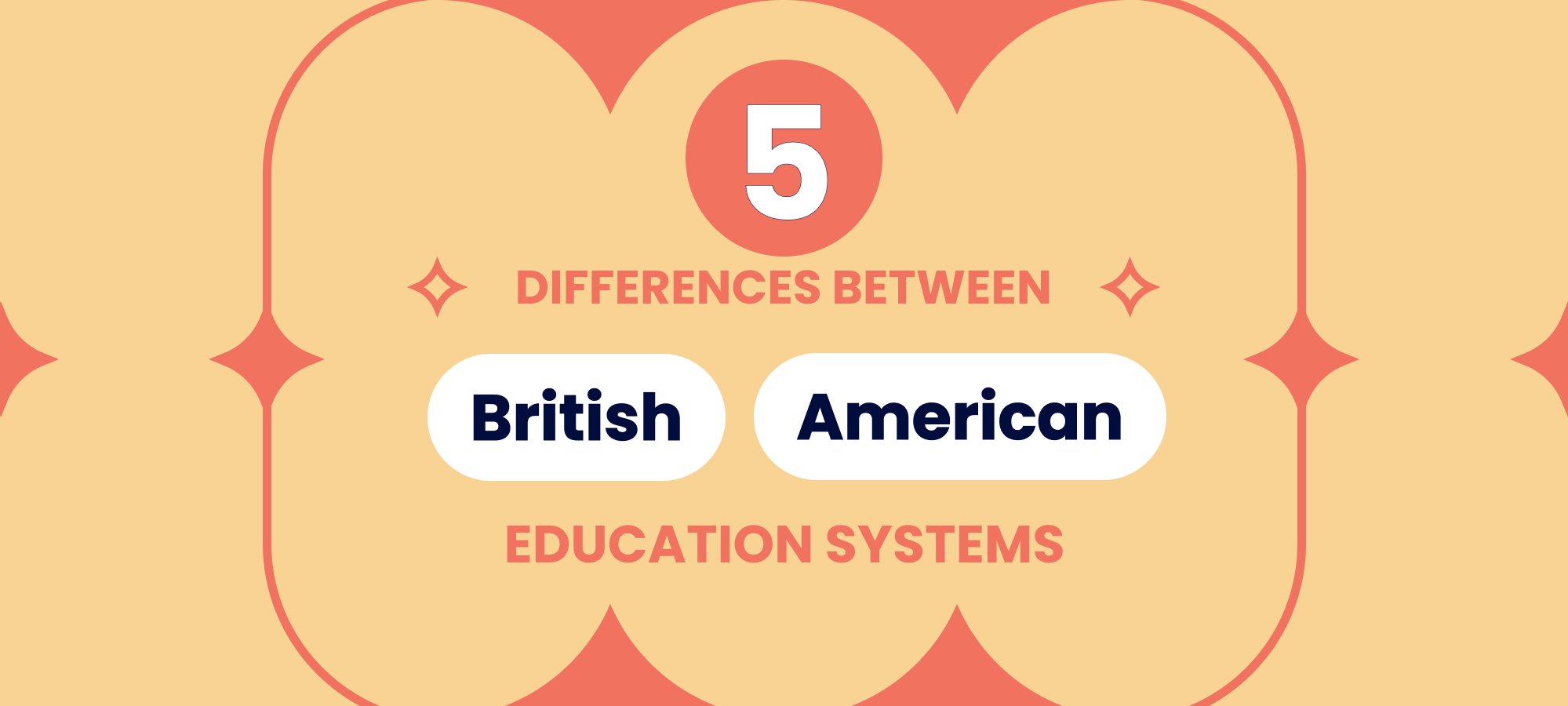5 Differences Between the British and American Education Systems in Dubai You Should Know About
Introduction
As an expatriate parent in Dubai, it's crucial to understand the differences between the British and American education systems when choosing the right school for your child. Both systems have their unique features, and knowing these distinctions can help you make an informed decision about the best learning environment for your child's needs. In this blog post, we'll explore five key differences between the British and American education systems in Dubai.
1. Curriculum and Structure
One of the most significant differences between the British and American education systems in Dubai is the curriculum and overall structure.
British Curriculum:
The British curriculum, also known as the National Curriculum for England, is divided into four key stages:
- Key Stage 1: Ages 5-7 (Years 1-2)
- Key Stage 2: Ages 7-11 (Years 3-6)
- Key Stage 3: Ages 11-14 (Years 7-9)
- Key Stage 4: Ages 14-16 (Years 10-11)
In Years 10 and 11, students work towards their General Certificate of Secondary Education (GCSE) or International General Certificate of Secondary Education (IGCSE). After completing their GCSEs, students can choose to continue with A-Levels (Years 12-13) or pursue other qualifications, such as the International Baccalaureate (IB) Diploma.
American Curriculum:
The American education system typically follows a structure of:
- Elementary School: Kindergarten - Grade 5 (Ages 5-10)
- Middle School: Grade 6 - Grade 8 (Ages 11-13)
- High School: Grade 9 - Grade 12 (Ages 14-18)
In the American system, students receive a high school diploma upon completing Grade 12. They can also choose to take Advanced Placement (AP) courses, which are college-level classes, to potentially earn college credits.
2. Assessment and Grading
Another notable difference between the British and American education systems is the approach to assessment and grading.
British System:
In the British system, students take formal examinations at the end of each key stage. These exams include:
- Key Stage 1 and Key Stage 2: Standard Assessment Tests (SATs) in English, Math, and Science
- Key Stage 4: GCSEs or IGCSEs in various subjects
- Key Stage 5: A-Level examinations in subjects chosen by the student
The British grading system often uses letter grades (A* to G for GCSEs, A* to E for A-Levels) or numerical grades (9 to 1, with 9 being the highest, for reformed GCSEs).
American System:
In the American system, assessment is more continuous, with students receiving grades throughout the academic year based on assignments, projects, quizzes, and exams. The grading scale typically uses letter grades (A, B, C, D, F) and a Grade Point Average (GPA) on a 4.0 scale. Formal examinations like the SAT or ACT are often taken by high school students for college admissions but are not required for a high school diploma.
3. Flexibility and Subject Choices
The flexibility in subject choices is another factor that distinguishes the British and American education systems.
British System:
The British system offers a broad range of subjects up until Key Stage 4 (GCSEs). However, students need to choose a limited number of subjects (usually 8-12) for their GCSEs, and this selection narrows further for A-Levels, where students typically study 3-4 subjects in depth.
American System:
The American system offers greater flexibility in subject choices throughout the student's education. Students can explore various subjects throughout their school years, including elective courses in arts, languages, or technology. In high school, they can also choose AP courses in a wide range of subjects, allowing them to delve deeper into their areas of interest without being limited to a specific number of subjects.
4. Extracurricular Activities and Sports
Extracurricular activities and sports play different roles in the British and American education systems.
British System:
While extracurricular activities and sports are an essential part of the British education system, the emphasis on these activities may vary depending on the school. Some British schools in Dubai offer a wide range of clubs and societies, as well as competitive sports teams, but they may not be as prominent as in American schools.
American System:
In the American system, extracurricular activities and sports play a central role in the overall school experience. Students are encouraged to participate in various clubs, organizations, and sports teams, which can foster personal growth, teamwork, and leadership skills. The emphasis on sports in American schools is particularly notable, with competitive sports teams often enjoying a high level of support and recognition.
5. College and University Admissions
The process for college and university admissions also differs between the British and American education systems.
British System:
In the British system, students typically apply to universities through the Universities and Colleges Admissions Service (UCAS). They submit one application, which is sent to up to five universities. Admission decisions are often based on a combination of A-Level or IB predicted grades, personal statements, and teacher references. Some courses may also require additional tests or interviews.
American System:
In the American system, students typically apply to colleges and universities individually, often using the Common Application. The admissions process considers a range of factors, including high school GPA, SAT or ACT scores, personal essays, extracurricular activities, and teacher recommendations. Some colleges and universities also offer early decision or early action admission options, allowing students to apply early and receive an earlier decision.
Conclusion
Understanding the key differences between the British and American education systems in Dubai can help you make an informed decision about the right school for your child. Consider factors such as curriculum structure, assessment and grading, subject flexibility, the role of extracurricular activities and sports, and the college and university admissions process. Ultimately, the best choice will depend on your child's unique needs, interests, and future goals.

